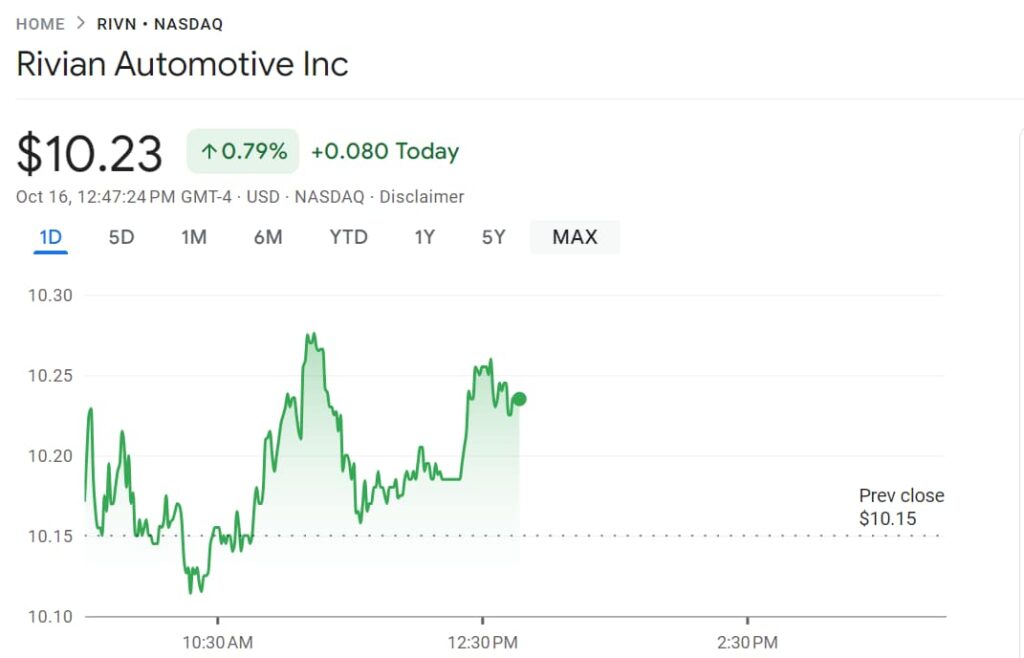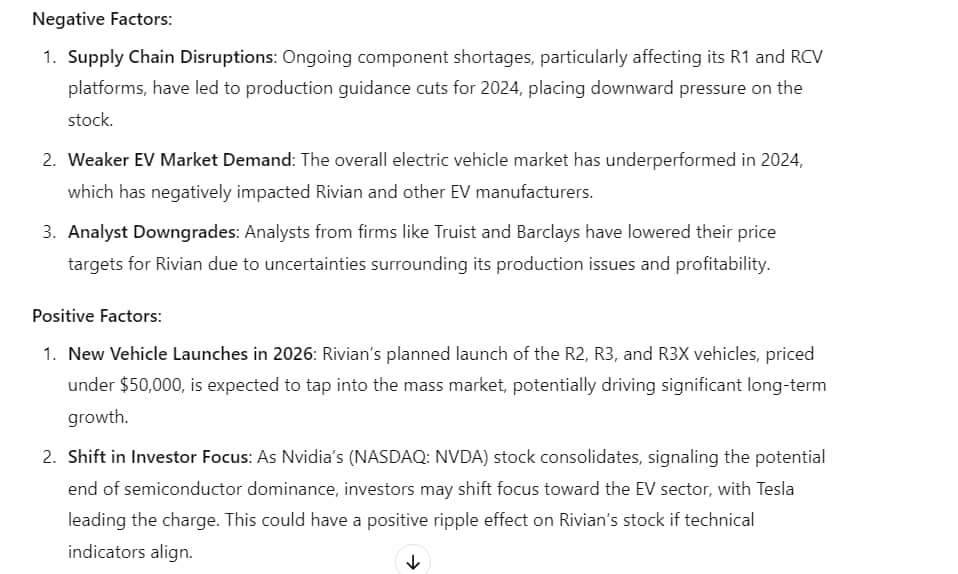Rivian Automotive (NASDAQ: RIVN) has faced a turbulent 2024, with supply chain issues, production shortfalls, and broader EV market struggles weighing heavily on its stock.
After slashing its annual production forecast and missing key delivery targets, investors are left wondering where Rivian’s stock could be heading as the year comes to a close.

Currently, the stock has dropped by 56% year-to-date and is trading at $10.18. The company’s recent challenges, combined with analyst downgrades, have added to the uncertainty, leaving investors keen to know whether Rivian can rebound or if further downside is in store.
Major factors influencing Rivian’s stock price
Rivian has been significantly affected by a key supply chain disruption, with a shortage of a critical component for its R1 and RCV platforms.
“Rivian is experiencing a production disruption due to a shortage of a shared component on the R1 and RCV platform. This supply shortage impact began in Q3 of this year, has become more acute in recent weeks and continues. “- company notes.
This shortage, which began in the third quarter of 2024, has worsened in recent weeks, forcing the company to lower its annual production forecast between 47,000 and 49,000 vehicles, down from 57,000 units.
Despite this, Rivian expects to deliver between 50,500–52,000 vehicles, reflecting modest growth over 2023. These disruptions, coupled with overall weak EV market demand, have placed significant pressure on the stock.
The broader EV sector has struggled this year, with even established players like Tesla (NASDAQ: TSLA) facing challenges. However, Tesla’s 2025 fundamentals suggest potential stock growth as the company plans to launch affordable models in early 2025, making EVs accessible to a wider audience.
On a positive note, Rivian is set to launch three new vehicles starting in 2026: the R2, R3, and R3X, all priced under $50,000. These models are designed to target the mass market, allowing Rivian to broaden its consumer base significantly.
This strategy is similar to Tesla’s success with the Model 3 and Model Y, which dramatically boosted its sales and market reach. Rivian’s upcoming models could position the company for substantial long-term growth despite the challenges it currently faces.
Revised analyst targets
Analysts have responded to these developments with revised targets. Truist lowered its price target from $16 to $12, maintaining a “Hold” rating.
Similarly, Barclays reduced its price target from $16 to $13, citing uncertainty over when the company’s supply chain issues will be resolved.
To gain further insights into where Rivian’s stock might trade by year-end, Finbold consulted OpenAI’s most advanced tool, ChatGPT-4, to predict the potential price movement based on current market conditions and company performance.
AI prediction for year-end 2024
Given these factors, AI-based model predict Rivian’s stock could trade between $9 and $11 by the end of 2024.

While ongoing production issues and weak EV demand are likely to keep downward pressure on the stock, Rivian’s long-term partnerships, potential federal funding, and market shifts led by Tesla’s performance could provide some stability in the future.
Investors will be closely watching Rivian’s next earnings report, set for November 7, 2024, to gauge the company’s ability to recover and regain momentum.









